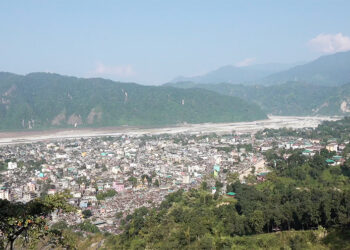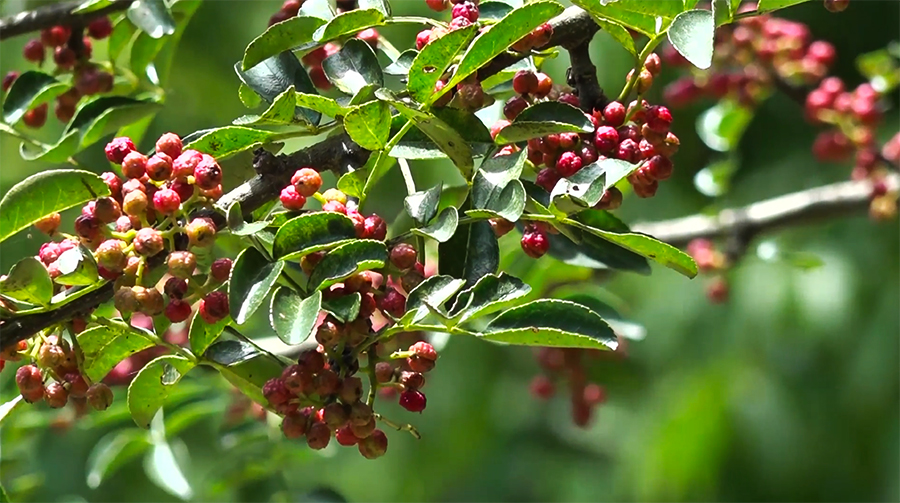 Sichuan pepper, locally known as Thingye has become a valuable source of income for the people of Nubi Gewog in Trongsa. Farmers say they earn good prices for their harvest without facing market challenges. They say that it plays an important role in sustaining their livelihood, and they hope to continue cultivating it in the years ahead. Widely used in local cuisine, Sichuan pepper is prized for its distinct aroma and the unique tingling flavour it adds to food.
Sichuan pepper, locally known as Thingye has become a valuable source of income for the people of Nubi Gewog in Trongsa. Farmers say they earn good prices for their harvest without facing market challenges. They say that it plays an important role in sustaining their livelihood, and they hope to continue cultivating it in the years ahead. Widely used in local cuisine, Sichuan pepper is prized for its distinct aroma and the unique tingling flavour it adds to food.
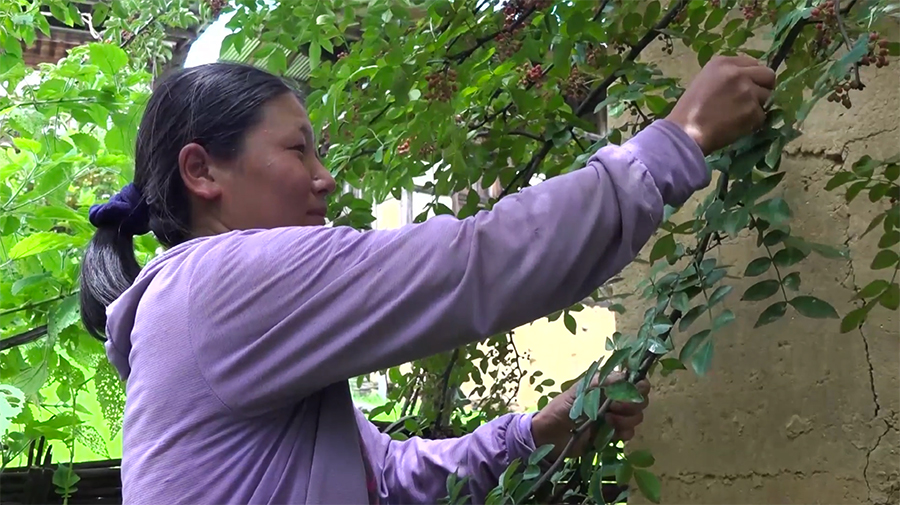 26-year-old Choni Lhamo is wrapping up her final harvest of Sichuan peppers beside her cowshed, accompanied by her mother and a neighbour.
26-year-old Choni Lhamo is wrapping up her final harvest of Sichuan peppers beside her cowshed, accompanied by her mother and a neighbour.
With more than ten trees, she is now working on the last one. Despite busy days with paddy cultivation and household chores, the mother of one makes sure to complete the harvest on time.
She says Sichuan pepper is easier to grow compared to other crops since it needs little care. In recent years, the spice has become increasingly popular in Nubi Gewog.
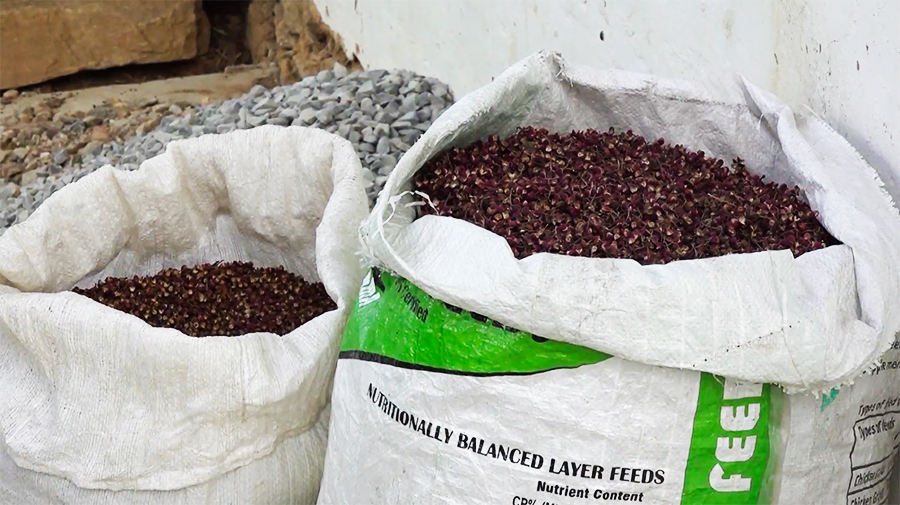 Usually harvested around this time, the peppers are dried at home before being sold. While Choni hasn’t faced marketing problems in the past, she is a little unsure this year as no buyers have contacted her yet. Still, she remains hopeful.
Usually harvested around this time, the peppers are dried at home before being sold. While Choni hasn’t faced marketing problems in the past, she is a little unsure this year as no buyers have contacted her yet. Still, she remains hopeful.
“Almost all the neighbours in our village have finished harvesting their Sichuan peppers, and we are the last ones to do so. We can see that the yield is good, similar to last year. Likewise, we are expecting the same price this year. Last year, we sold the dried Sichuan pepper at Nu 850 per kilogram. We managed to sell almost 70 kilograms and earned around Nu 60,000.”
Growers say Sichuan pepper is one of the gewog’s most prized products, with their variety, Nubi Thingye, for its unique taste.
They shared that while Sichuan pepper is easier to grow and sell compared to other crops, harvesting remains a challenge since they have to climb trees, risking injury and falling.
“There are several challenges while harvesting Sichuan peppers. Our clothes get torn, thorns pierce us, and there is no comfortable place to sit or stand on the tree during harvesting. This also creates a risk of falling from the tree. However, we feel happy in the end when we sell the harvest, as there is no threat from wild animals except for a few birds,” said Choni Lhamo.
“Chillies get rotten, but Sichuan pepper does not require any protection or extra care like chillies. It only needs to be planted in the soil, that’s all. Therefore, I will continue producing Sichuan pepper and remain interested in it in the future,” said Pema Choki.
“Unlike other crops, it is convenient to sell Sichuan peppers. Customers usually buy them all at once, allowing us to receive the full payment together. This way, we can buy whatever we need with the money at once. Until last year, we did not face any market problems. Some customers even booked the peppers before the harvest,” said Rinchen.
Meanwhile, the district and gewog administrations have plans to promote and diversify Sichuan pepper products and improve their marketing.
According to a district official, the project plan is ready, and around Nu 1 M is required to start it, focusing on new saplings and ensuring quality production.
“For marketing Sichuan pepper, we are planning to standardise the process. Firstly, we will continue selling it as we do today. Next, we will package it in powdered form. We also plan to produce a paste that consumers can use directly, similar to practices abroad. Another strategy to obtain a better price is the possibility of extracting the oil to meet international standards, allowing us to sell it abroad,” said Karma Wangchuk, Chief District Agriculture Officer, Trongsa.
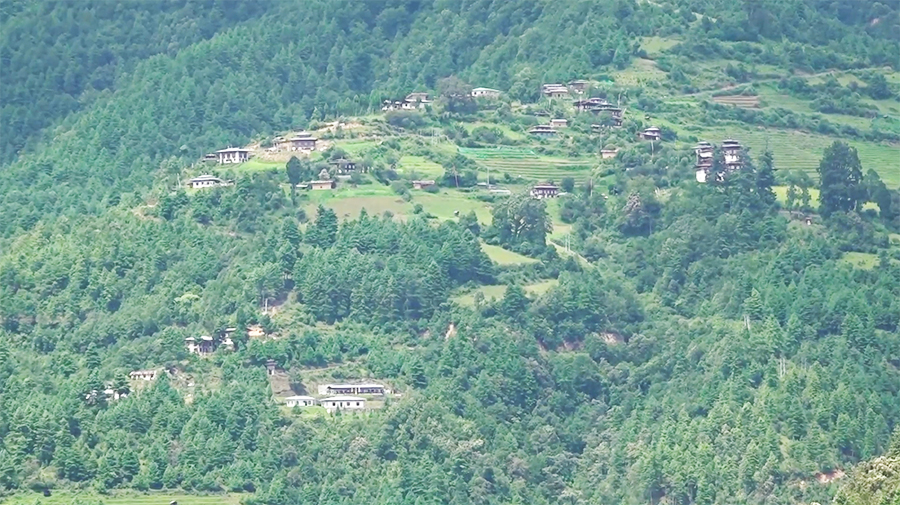 According to the district report, Nubi Gewog produced around 12,000 kilograms of wet Sichuan pepper last year, making it the highest producer in the district.
According to the district report, Nubi Gewog produced around 12,000 kilograms of wet Sichuan pepper last year, making it the highest producer in the district.
Changa Dorji, Trongsa
Edited by Sonam Pem










